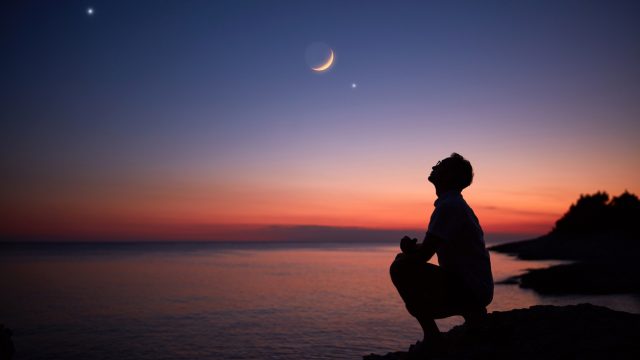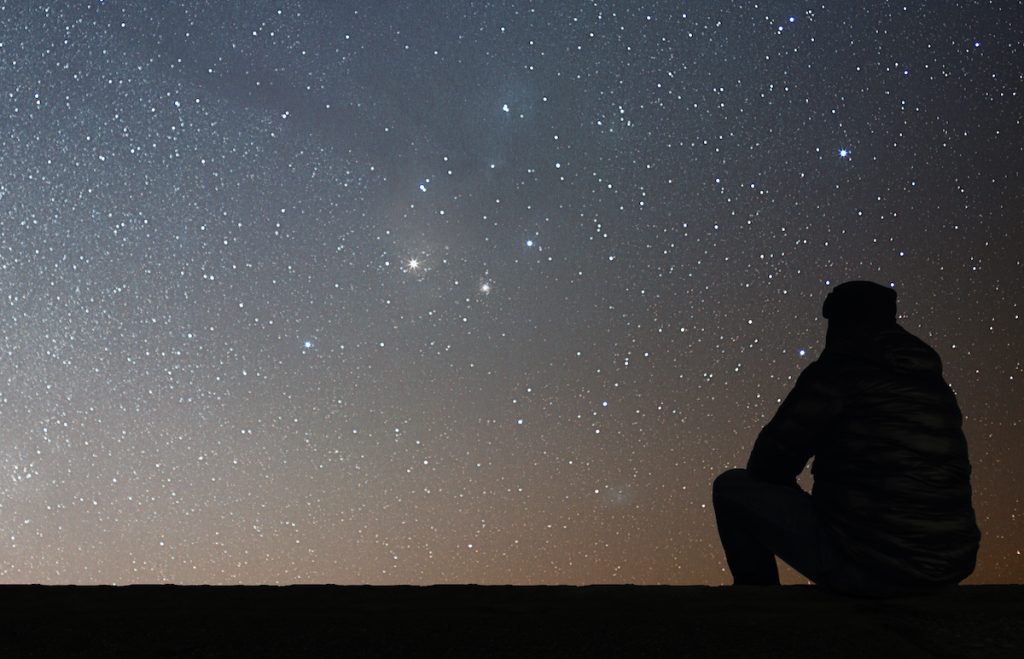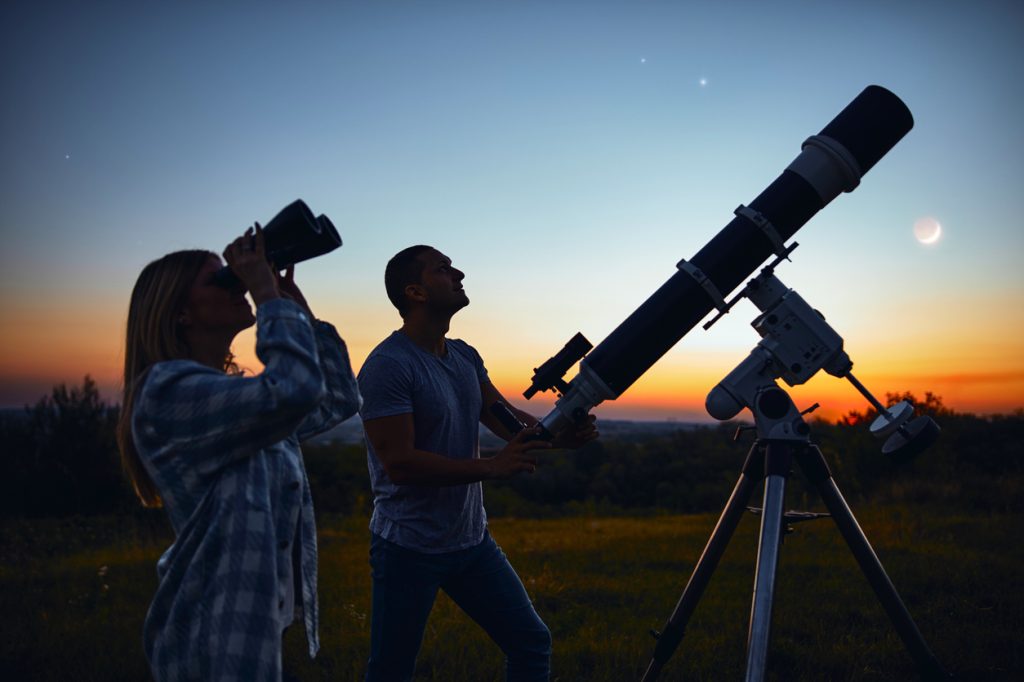5 Planets Are Aligned and Easily Visible This Week—Here’s How to Spot Them

Even though looking up at the night sky on any clear night can be one of the easiest ways to feel a sense of wonder, occasionally we’re treated to an extra-special show. Sometimes, you get front-row seats to a once-in-a-lifetime event, such as the green comet that streaked across the sky for the first time in 50,000 years this past January. But even our closest celestial neighbors can put on a spectacle of their own that’s worthy of checking out. And this week, five planets in our solar system are aligned and easily visible in the night sky. Read on to see how you can spot them.
READ THIS NEXT: The Next Total Solar Eclipse Will Be the Last Until 2044, NASA Says.
This week, you can easily spot more than half of the planets in our solar system in the night sky.

Amateur astronomers can look forward to some must-see celestial activity in the coming days. This week, Venus, Mars, Jupiter, Mercury, and Uranus will form an arc across the night sky, with the planets putting on a dazzling display as they line up near the moon. Fortunately, both the placement and brightness of the objects will mean most people will be able to spot them using just their eyes.
“The heavens are aligning,” Noah Petro, a scientist with the Lunar Reconnaissance Orbiter project at NASA, told The Washington Post. “If you have a telescope, you can dust them off or a pair of binoculars; it’s a great excuse to get out and look for the night sky. And if you don’t, you can still see these [planets].”
You won’t need to stay up late to catch a glimpse of the spectacle.

If you’re running on a tight schedule or are worried you’ll miss your chance to gaze up, you may still be in luck. The spectacle will be on display for several days, becoming visible just after sunset, Petro told The Post. The entire alignment will stay within sight until about 30 minutes after the sun goes down when Mercury and Jupiter dip below the horizon and out of view.
While March 28 was considered the optimal viewing date by astronomers, there’s still some advantage to catching the show throughout the week. The coming nights will “actually provide better opportunities to see Mercury as it puts another degree between it and the horizon through mid-April,” Tony Rice, a NASA ambassador, told The Post in an email.
RELATED: For more up-to-date information, sign up for our daily newsletter.
Here’s where to look if you want to catch the planetary alignment.

Unlike solar eclipses or some other night sky events, amateur astronomers won’t be limited by geography when trying to catch a glimpse. Instead, the alignment will be visible to people around the world who are lucky enough to have a clear sky and relatively low interference from light pollution. So long as you have your bearings, spotting them should be pretty easy.
“If you go outside, right at sunset, right after the sun goes down and look west, you’ll see these planets strung out in a line extending about 50 degrees or so,” Bill Cooke, a NASA astronomer, told CBS News, adding that the sight would look “very pretty.”
If you’re hoping to identify each, Mars will appear highest in the sky and closest to the moon, while Uranus will be located close to dazzlingly bright Venus, according to Petro. And notably, viewers also won’t need any kind of telescope or binoculars to catch sight of the planets.
“That’s the beauty of these planetary alignments. It doesn’t take much,” Cooke told the Associated Press.
There will be other opportunities to see other planetary alignments relatively soon.

If weather conditions aren’t ideal for your area or you somehow still manage to miss this week’s solar system spectacle, you won’t have to wait too long to catch other planetary alignments. Unlike once-in-a-lifetime events like the passage of Comet C/2022 E3 (ZTF) earlier this winter, this type of celestial display can happen a few times a year. There will even be an opportunity this summer when Mercury, Uranus, Jupiter, Neptune, and Saturn will line up across the night sky on June 17, CBS News reports.
However, this week’s event does stand out for one particular reason. “Uranus is going to be the rare critter that you’ll be looking for in that alignment,” Cooke told CBS News, adding that it will have a greenish glow. “If you’re collecting planets, here’s the chance to add Uranus to your collection.”